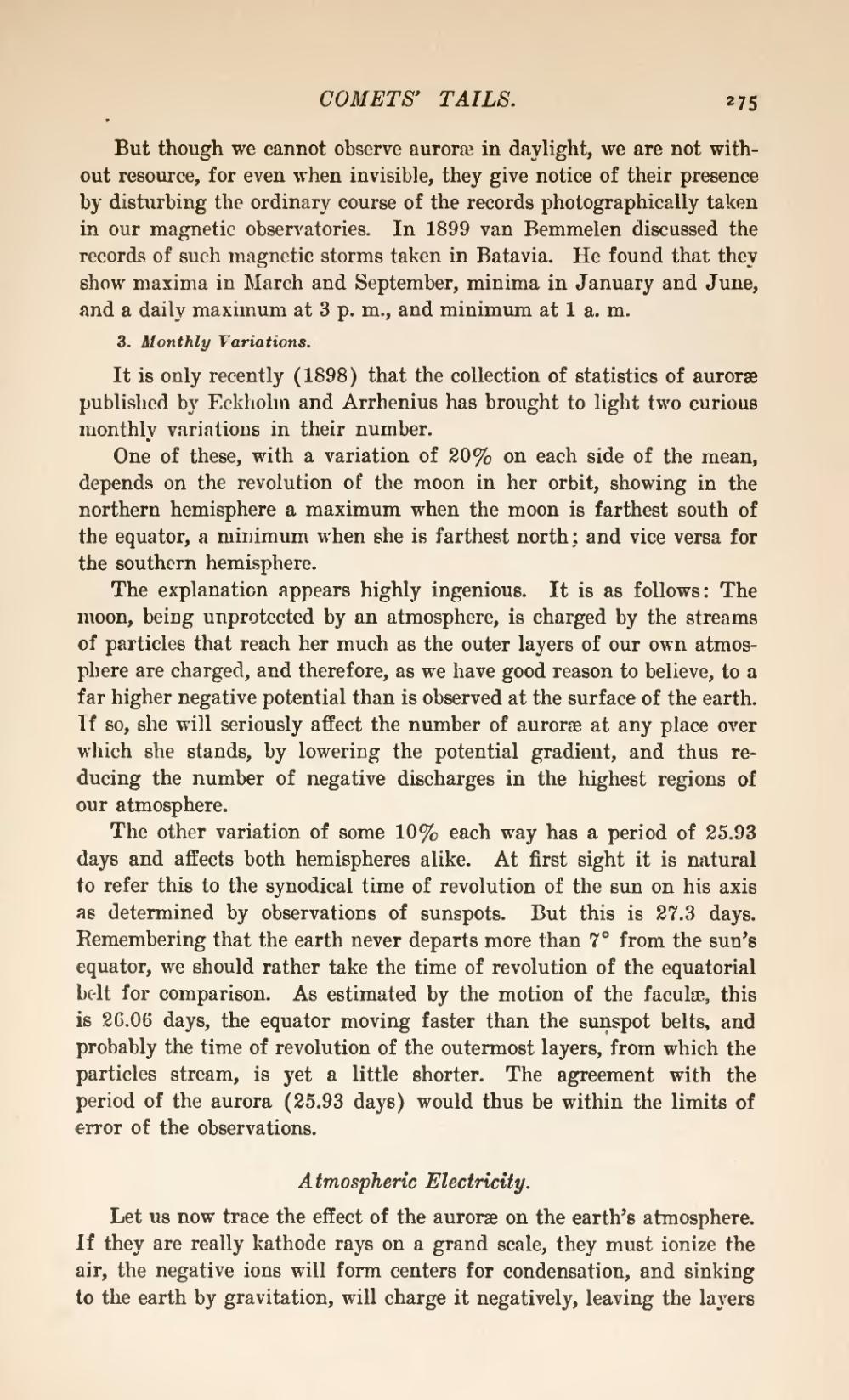But though we cannot observe auroræ in daylight, we are not without resource, for even when invisible, they give notice of their presence by disturbing the ordinary course of the records photographically taken in our magnetic observatories. In 1899 van Bemmelen discussed the records of such magnetic storms taken in Batavia. He found that they show maxima in March and September, minima in January and June, and a daily maximum at 3 p. m., and minimum at 1 a. m.
3. Monthly Variations.
It is only recently (1898) that the collection of statistics of auroræ published by Eckholm and Arrhenius has brought to light two curious monthly variations in their number.
One of these, with a variation of 20% on each side of the mean, depends on the revolution of the moon in her orbit, showing in the northern hemisphere a maximum when the moon is farthest south of the equator, a minimum when she is farthest north: and vice versa for the southern hemisphere.
The explanation appears highly ingenious. It is as follows: The moon, being unprotected by an atmosphere, is charged by the streams of particles that reach her much as the outer layers of our own atmosphere are charged, and therefore, as we have good reason to believe, to a far higher negative potential than is observed at the surface of the earth. If so, she will seriously affect the number of auroræ at any place over which she stands, by lowering the potential gradient, and thus reducing the number of negative discharges in the highest regions of our atmosphere.
The other variation of some 10% each way has a period of 25.93 days and affects both hemispheres alike. At first sight it is natural to refer this to the synodical time of revolution of the sun on his axis as determined by observations of sunspots. But this is 27.3 days. Remembering that the earth never departs more than 7° from the sun's equator, we should rather take the time of revolution of the equatorial belt for comparison. As estimated by the motion of the faculæ, this is 26.06 days, the equator moving faster than the sunspot belts, and probably the time of revolution of the outermost layers, from which the particles stream, is yet a little shorter. The agreement with the period of the aurora (25.93 days) would thus be within the limits of error of the observations.
Atmospheric Electricity.
Let us now trace the effect of the auroræ on the earth's atmosphere. If they are really kathode rays on a grand scale, they must ionize the air, the negative ions will form centers for condensation, and sinking to the earth by gravitation, will charge it negatively, leaving the layers

